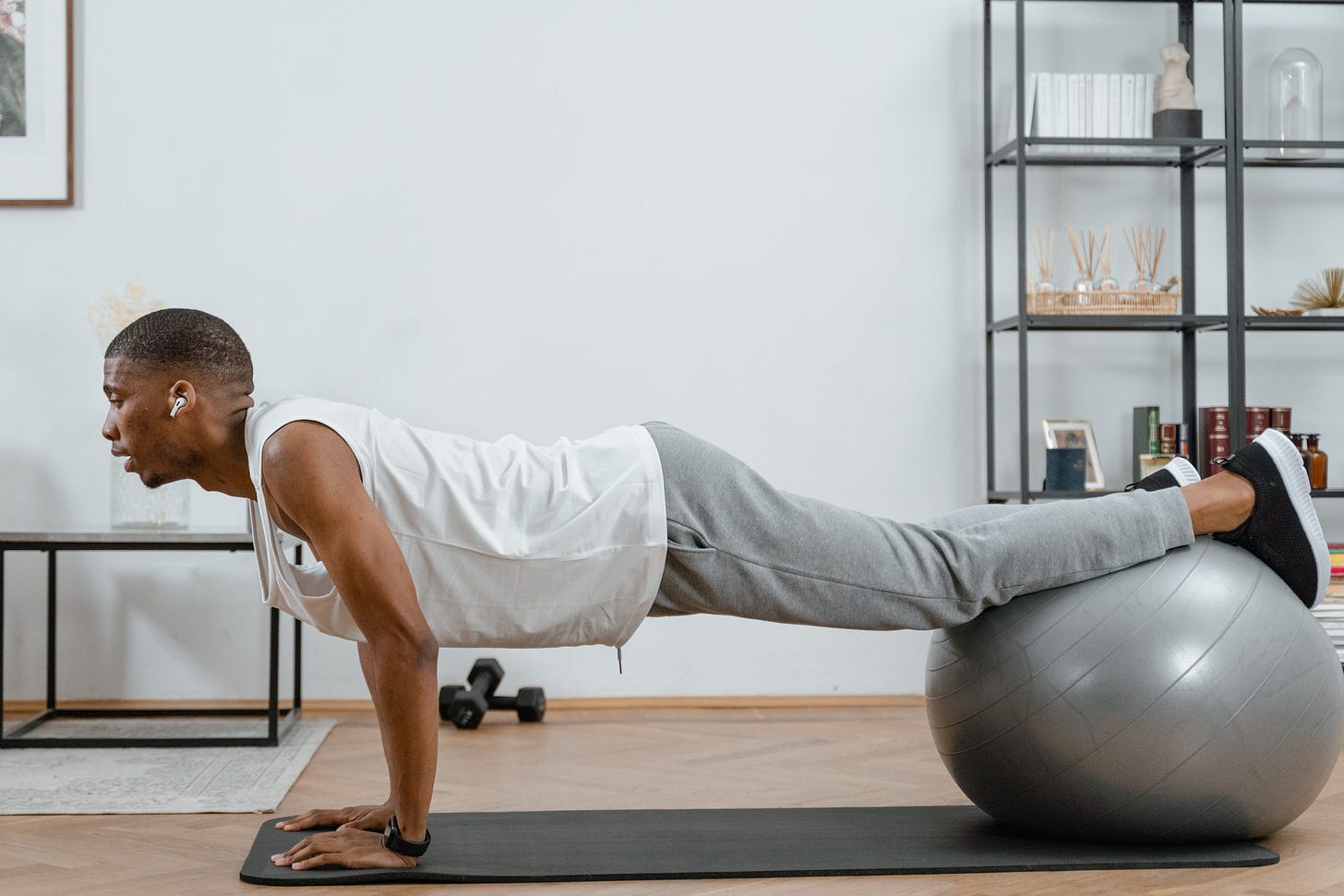The Secrets of Isometric Training: Getting Stronger Without Moving a Muscle
Core - Edition Nº28

As a younger athlete, I struggled with back and knee pain for several years. People normally think about this problem when they get much older. But with it as bad as it was, so early on, it used to worry me a lot. It started when I was around 14, and it wasn’t until a few years later that everything changed—when I found a clear answer to fixing pain and preventing injuries almost for good.
It’s strange how the secret to greater healthspan and fitness can be… to keep still. How counter-intuitive. However, isometric training was recommended to me by physiotherapists, osteopaths and coaches during the height of my issues. And if they’re all saying the same thing, it’s worth looking at.
If you’ve ever asked yourself, “How can I get stronger without lifting weights, running, or jumping?” then this may be your solution. A 2023 study in the British Journal of Sports Medicine with over 15,000 people found that isometric exercise helped to reduce blood pressure. In the study, aerobic exercise, dynamic resistance, combined and high-intensity interval training (HIIT) all helped when compared with non-exercise control interventions, but it was isometrics that had the most profitable impact. Why? Isometric training yielded the highest blood pressure during exercise. It was theorised that this might be what improves long-term blood flow regulation.
As I’ve written in my Core Training manual, most people look into exercise and building workouts by focusing on isotonic movements and contractions: shortening and lengthening a muscle repeatedly to create fatigue. Isotonic contractions subdivide into two phases: eccentric and concentric actions, whereby the eccentric action comprises the muscle establishing tension with help from a greater force (weight) during the lengthening phase of an exercise. Conversely, the concentric action is the opposite: the shortening phase. But this doesn’t solve everything.
Isometric (or static) exercises help emphasise muscle actions, protecting joints specifically when joint motion should be limited. They involve holding a static position and creating tension in the muscles.
When you move, isometric actions occur to dynamically stabilise your peripheral joints (elbows, knees, shoulders, ankles) and your spine. This helps to prevent pain or injury. Your hip adductor and abductor muscles will contract isometrically to keep you stable at the knee in the frontal and transverse planes during a squat, for example. Meanwhile, other muscles such as your quadriceps will move the hips, knees, and ankles along the sagittal plane.
Frontal Plane - forward and backwards movements
Transverse Plane - side-to-side movements
Sagittal Plane - twisting movements
So, while isotonic exercises contribute to how well you move, isometric exercises contribute to how well you move and prevent unnecessary movement that can cause serious harm in the long run.
The tension from the isometric exercise stimulates the muscle fibres and activates the nervous system, sending signals to the muscles to then contract harder, increasing their strength and endurance in that specific position. Joint and core stability improves as a result, improving your posture and balance as well as reducing your risk of cardiovascular diseases.
The best thing about isometric exercise is you can perform it anywhere, with or without weights, and it generally doesn’t matter what your fitness ability is. Even though the isometric movement overall is very rare in sports or everyday movement, the importance of it comes from learning postural control; keeping your body stable and able to resist great internal and external forces. This is vital for everyone.
I managed to reduce 95% of my knee pain in one month from isometric training. Some of the isometric exercises I used to fix my knee pain included:
Wall squat holds
Quarter squats
Clamshell holds
So, if you’re ever struggling with pain in this area, give isometric training a try. I’m thinking of compiling a routine in an ebook. You can let me know your thoughts about it at any time by commenting on this blog or sending me an email.


